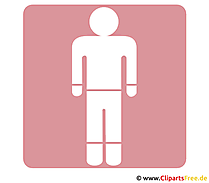WHEN PICTURES SAY MORE THAN WORDS - HOW THE SMILEY BEGAN TO SMILE
Let your feelings run free and say in an email or SMS what is currently being thought or felt is not always that easy. There are often situations in which an author cannot think of the right words to express in words what is to be communicated to the other person. Everyone has probably found themselves in a situation in which it was found difficult to communicate something to the other person with mere words, without being misunderstood or even being misunderstood. In such situations, the so-called “emoticons” come into play, which have long since become a natural part of everyday communication in today's togetherness. The little "emotional helpers" have a long history and for a long time were anything but natural.
On t-shirts, bags, pillows & Co - A triumphal procession
Nowadays it is difficult to imagine everyday life without the yellow symbols. You are not only proficient in everyday electronic correspondence, but also many things and objects in everyday life. The “yellow messenger of joy” is emblazoned on everything possible and impossible. A professional merchandising machine has taken possession of the little one and transported it into all niches in life: T-shirts, bags, pillows - there is practically nothing that can resist the smiley face. Especially in times of growing internet trade, t-shirts, mugs or pillows can easily be designed individually via any portals. In addition to smilies, photo or text motifs are among the popular variants, whatever Cliparts website clarified. Even signs or maps can be found here as possible printable items.
Small icons provide the perspective
“Emoticon” is a language creation from English and is made up of “emotion” for “feeling” and “icon” for “sign”. The drawing objects that are supposed to express a certain state of mind are in turn called "emoji" for short.
The advantages of the "figurines" are obvious, or in their "face":
- Every emotion or every emotional state can be expressed unmistakably and unambiguously without the need for many words - if a linguistic articulation is necessary at all.
- Emotions can be transported in a voice message in seconds with a click of the mouse.
- Any linguistic ambiguities and the resulting potential misunderstandings are ruled out in advance.
- There is now a suitable "Emoji" for practically every emotional state and every area of life.
Smiley's ancestors - the pictograms
Pictograms have been used since time immemorial to express information with the help of symbols. As symbols, they stand for what is meant in a graphically simplified, stylized form that the largest possible audience can already guess what
 is meant. Social conventions determine which state or which event the "icon" should stand for - this means that the symbolism is unequivocally and associatively cemented in the recipient's imagination:
is meant. Social conventions determine which state or which event the "icon" should stand for - this means that the symbolism is unequivocally and associatively cemented in the recipient's imagination: The advantages of the pictograms lie in their cross-lingual symbolism, which undoubtedly represents what is meant with the help of a pictorial language conditioned in the imagination of the individual. The visual language, for its part, is normatively regulated by social agreement. Disadvantages lie in their almost exclusive reduction to the visualization of factual processes or actual states, without taking into account any associated emotional aspects.
When emotions come into play - the pre-electronic era
The process of transforming the pictogram into an emoji can be expressed as an equation:
Pictogram+ emotion = emoticon
The commercial artist Harvey Ball, who worked in 1963 on behalf of the State Mutual Life Assurance Cos. of America should design a friendly logo for a button to motivate their employees. True to the motto “point - point - comma - line”, he designed a stylized, circular face with two eyes, which on a yellow background was intended to attract the viewer's attention.
The French journalist Franklin Loufrani picked up the idea a few years later, registered it as a patent and thus secured the rights of use - and continues to do so today. As an employee of the "France-Soir" he wanted to counter the widespread cliché that news generally only has something to do with negative events and adopted Ball's smiley as a striking label for positive newspaper reports. After he had secured the rights, the first smiley was printed for the January 01st 1972 issue and adorned the "O" in the newspaper's name - a complete success. The first licensees such as Agfa, Levi's and M & Ms bought into Loufrani's newly founded company "Smiley Licensing Corporation" and made its owner a multi-millionaire.
Smileys ASCII-descent
While the original smiley spread around the world in printed form in the 70s and early 80s, at the beginning of the electronic age the question arose among experts how the cheerful fellow could be represented in the new type of electronic mail. In an electronic discussion forum on September 19, 1982, student Scott E. Fahlman suggested that the icon be represented using the following ASCII character in future when jokes or generally funny things were to be identified:
:-) - The reader should imagine the ASCII character on the side.
:-( - And for non-funny content, he also suggested the opposite.
Fahlman's proposal made waves, a start was made and a huge range of other variants was to follow, here are just a few examples:
-: - & means "speechless"
-: -x means "kisses"
-: '- (means "cry"
-: - [means "vampire"
LOL
Meanwhile, a pattern of no value: The acronym for “Loughing out loud” (laughing out loud) is increasingly being replaced by emojis in emails and chats and is now out of fashion.